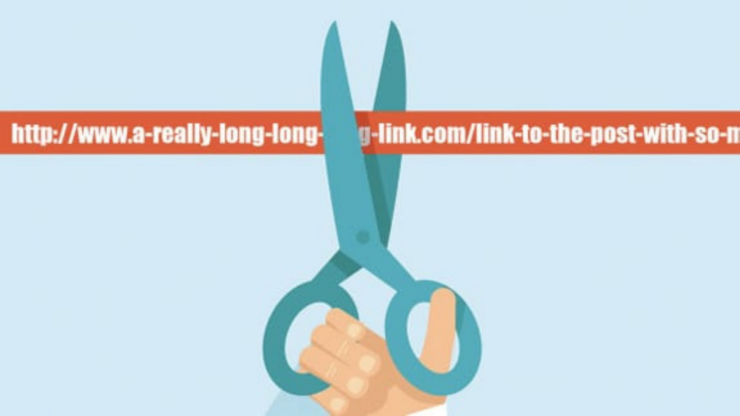Link shortening is a vital tool in the digital space, transforming cumbersome URLs into neat, manageable, and more appealing versions. This practice has become an integral part of effective URL management, simplifying the distribution of content while also providing useful data to strategize marketing efforts.
There are several compelling reasons why shortened links are increasingly popular. The most apparent is their improved aesthetics, as long links laden with characters and codes can be visually unattractive and challenging to share. Shortened links are more accessible, compact, and user-friendly, and they can substantially boost click-through rates. Besides, they come with tracking capabilities, offering valuable insights about the audience, like engagement, location, and referral sources. They’re also easier to share across social media platforms, emails, and printed materials, making them a favorite tool for marketers and content creators alike.
The Basics of Link Shortening
Link shortening is the process of converting a long URL into a significantly shorter one, while still directing to the same webpage. It’s achieved using a redirect on a domain name that is shorter than the original web address.
Using a reputable link shortening service is essential to ensure the consistency and reliability of your links. There are several trusted services available today, including Bitly, CurtLink, TinyURL, and Google’s Firebase Dynamic Links. These services not only provide link shortening but also offer valuable features like link customization and detailed analytics.
Choosing the Right Link Shortening Service

When it comes to selecting a link shortening service, there are several factors to consider. Firstly, check if the service offers comprehensive link analytics, which can provide valuable insights into user behavior and engagement. Another important aspect is the ability to customize your links, making them more recognizable and consistent with your branding. Finally, don’t overlook the security measures implemented by the service, as the internet is filled with potential threats and scams. If you want all of the above mentioned traits check this.
Customizing Shortened Links
Customization is a powerful feature offered by many link shortening services. By changing the random characters typically used in shortened links to meaningful words or brand-related phrases, you can create memorable, branded links that resonate with your audience. Consistency in link creation is key, as it helps establish brand recognition and trust among your users.
Tracking and Analytics
One of the most powerful aspects of link shortening services is their ability to provide in-depth tracking and analytics. You can gather data on click-through rates, user geolocation, and referral sources, all of which offer valuable insights to optimize your marketing strategies. Leveraging these metrics can aid in making data-driven decisions to boost engagement and ROI.
Ensuring Link Security

While link shortening brings numerous benefits, it’s not without its risks. Shortened links can sometimes be exploited for phishing attacks or malicious redirects. However, these risks can be mitigated by using trusted shortening services and regularly verifying the destination URLs. It’s also advisable to use services that offer security features like warnings for suspicious links.
Mobile Optimization
With mobile users making up a significant portion of internet traffic, it’s crucial to create mobile-friendly shortened links. They should be easy to click and share across various devices. Remember, user experience plays a massive role in engagement rates, and mobile optimization is a significant part of that.
Social Media Best Practices
Shortened links are especially useful on social media platforms, where character limits can be a challenge. They not only help save space but can also enhance the visual appeal of your posts. Optimize link previews by ensuring they display the right information and images to entice users to click. It’s all about creating the maximum impact with limited space.
Link Shortening for SEO

Shortened links, when used correctly, can complement your SEO efforts and contribute to a better user experience. While they do not directly impact search engine rankings, ensuring that your shortened links lead to SEO-optimized pages can significantly boost page views and lower bounce rates. By directing users to relevant and valuable content through shortened links, you increase the likelihood of engagement, social sharing, and backlinking, all of which indirectly aid your SEO efforts.
Remember, every click on your shortened link is a potential boost to your site’s engagement metrics, indirectly contributing to a positive impact on your overall SEO strategy. By strategically incorporating shortened links into your content and promoting them effectively, you can enhance your website’s visibility, credibility, and user engagement.
Avoiding Link Shortening Pitfalls
While link shortening offers numerous benefits, it is important to be aware of the potential pitfalls that can arise. One common issue is link rot, where shortened links stop working due to various factors such as link expiration, changes in redirection settings, or discontinuation of the link shortening service. To mitigate this risk, it is crucial to regularly monitor and update your shortened links to ensure they remain functional.
Another challenge is the loss of control over URLs, as shortened links are typically managed by the link shortening service provider. This can lead to dependence on a third-party platform and the risk of potential service disruptions. Additionally, the need for long-term management of shortened links requires ongoing attention and organization to maintain an effective URL management system. By being proactive in monitoring and maintaining your shortened links, you can overcome these challenges and optimize their benefits.
Alternatives to Link Shortening

While link shortening is a powerful tool for managing URLs, it is important to consider alternatives that may be more suitable in certain scenarios. Branded domains and vanity URLs offer greater control and branding opportunities. Branded domains allow you to use your own domain name as a shortened link, enhancing brand recognition and credibility. Vanity URLs provide the ability to create custom URLs that align with your brand or campaign, further reinforcing your brand identity.
These alternatives, although requiring more effort and resources to set up and maintain, can provide a higher degree of customization and recognition. It’s essential to evaluate your specific goals and requirements to determine whether link shortening, branded domains, or vanity URLs will best serve your needs. By carefully selecting the appropriate URL management approach, you can optimize your branding efforts, strengthen user trust, and enhance the overall effectiveness of your marketing strategies.
Conclusion
To conclude, mastering the art of link shortening can greatly enhance your digital marketing strategy and content sharing endeavors. With the right tools and understanding, you can make your links more appealing, trackable, and effective. Don’t forget the importance of security, analytics, and mobile optimization in the process. Whether it’s managing your website’s URLs or sharing content on social media, link shortening is an indispensable tool in the modern digital toolbox. Keep exploring, keep learning, and you’ll keep mastering the ever-evolving art of URL management.

